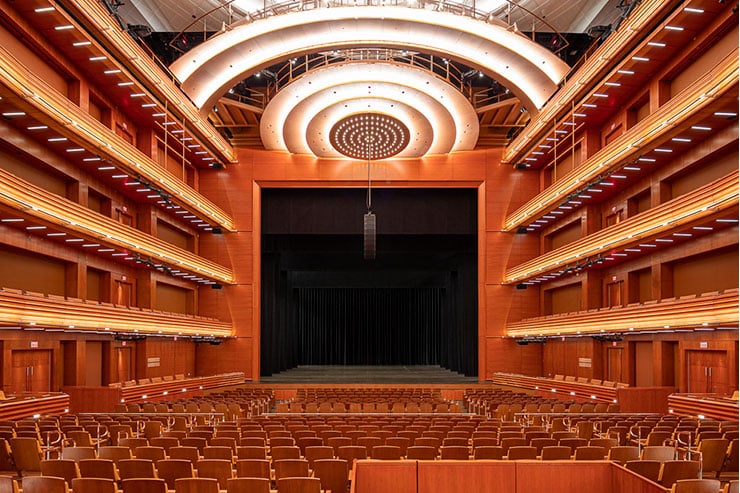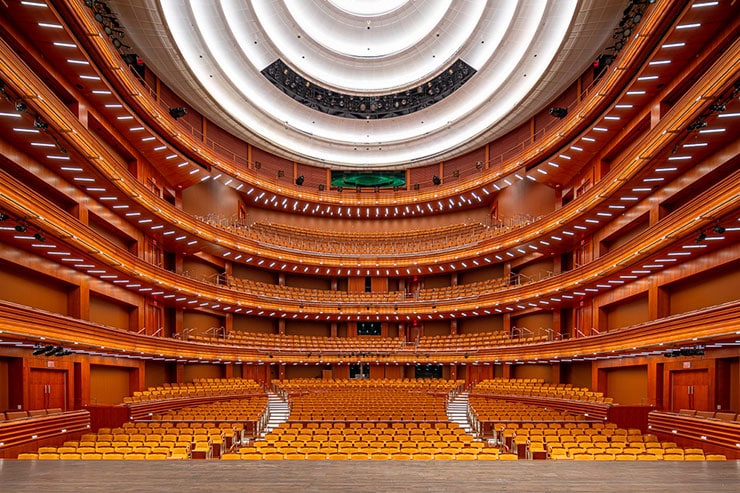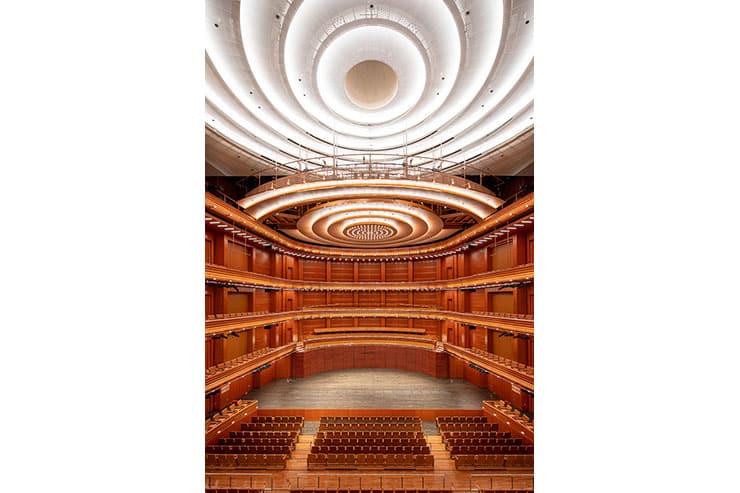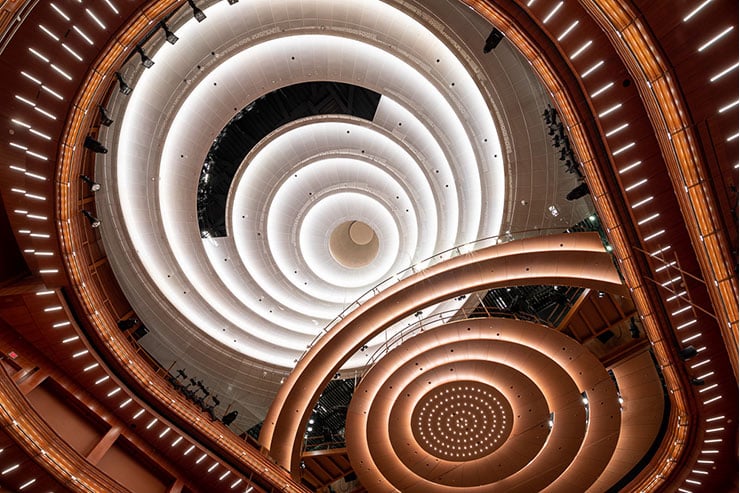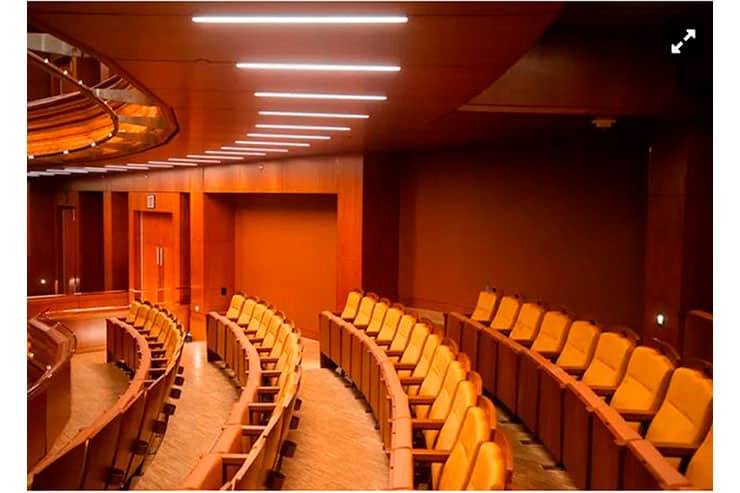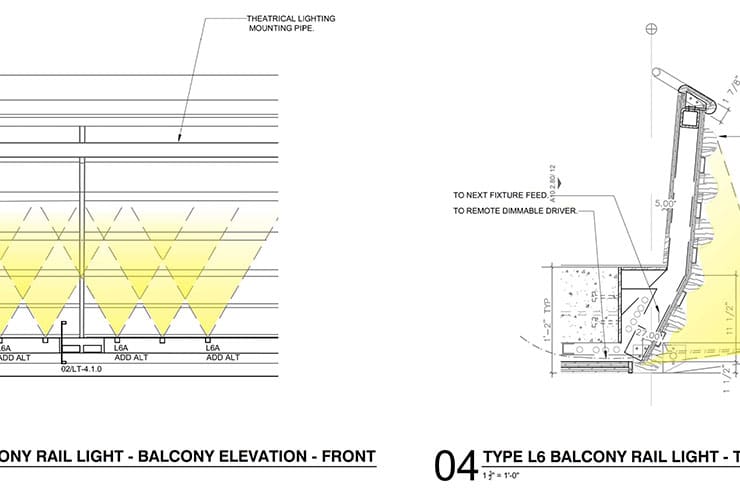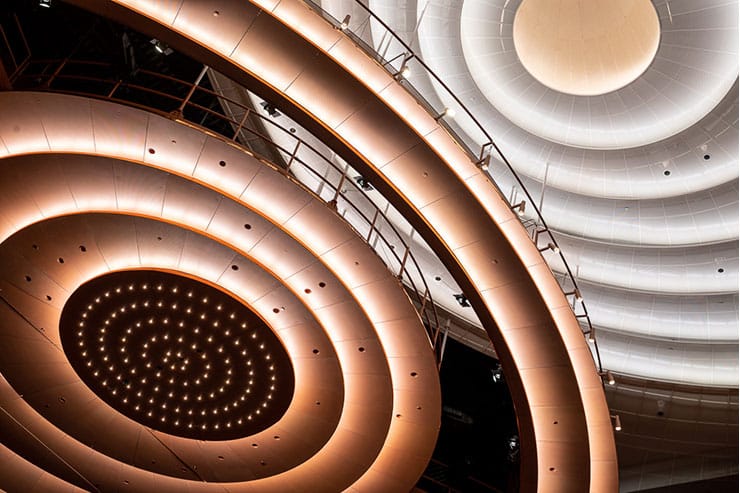This website uses cookies so that we can provide you with the best user experience possible. Cookie information is stored in your browser and performs functions such as recognising you when you return to our website and helping our team to understand which sections of the website you find most interesting and useful.
Steinmetz Hall, Dr. Phillips Performing Arts Center, USA
ProjectSteinmetz Hall, Dr. Phillips Performing Arts CenterLocationFlorida, USALighting DesignAnn Kale Associates, USAArchitectBarton Myers Associates, USAClientDr. Phillips Performing Arts CenterLighting SuppliersOptic Arts / Luminii, Belfer Lighting, Wila, Color Kinetics, iGuzzini, Tokistar, HK Lighting Group, Altman, Lucifer LightingPhotographyCiro Coelho Photography
Steinmetz Hall, part of the Phase 2 addition to the Dr. Phillips Performing Arts Center located in Orlando, Florida, is considered as one of the world’s most acoustically perfect spaces. It is also one of the very few theaters in the world that can transform in shape, seating and sound to accommodate a variety of performances and events including orchestra, a proscenium stage, platform table seating for cabaret style theater, as well as a flat floor for ballroom dancing. The lighting follows the Architect’s ambition that the hall be a modern version of the grand historic performance halls of Europe.
Slide descriptions:
1. Steinmetz Hall, part of the Phase 2 addition to the Dr. Phillips Performing Arts Center located in Orlando, Florida, is designed to achieve an N1 sound rating and is considered as one of the world’s most acoustically perfect spaces. It is also one of the very few theaters in the world that can transform in shape, seating and sound to accommodate a variety of performances and events including orchestra…
2. …proscenium stage (as seen here), platform table seating for cabaret style seating, as well as a flat floor for ballroom dancing. Seating capacity ranges from 800 to 1741 seats depending on the configuration.
3. (View looking from stage to back of hall.) The architect designed the Steinmetz Hall to be a modern example of the great historic halls of Europe. In lieu of decorative fixtures illuminating the space, simple modern lighting is used to express the magnificent architecture covered in cheery wood.
4. In lieu of a chandeliers, the illuminated ceiling becomes the central decorative feature comprised of a suspended small copper and large white sound reflectors.
5. The copper ceiling, located at the front of the hall, steps lower towards the center, allowing for each layer to be uplit as circular coves. The central lower section is illuminated with 112 miniature star-like fixtures at 1.8 watts each. The semi-recessed fixtures are arranged in concentric circles and wired so that each row can be dimmed independently along with the rows of cove light. This is so that the rows of light can gently fade or brighten toward or away from the center of the ceiling, marking the beginning, intermission, and ending of the performance, and making for a more exciting theatrical experience.
6. The larger white suspended ceiling, also serves as a sound reflector. Instead of the convex shaped copper ceiling, the reflector steps up to form a concave dome. Made of perforated metal, the continuous LED strips that uplight the ceiling are mounted to the dome’s stepped framing system so that the strips are 2” above the perforated metal surface, an important feature in avoiding the fixtures and wiring to remain unseen from below. And like the copper ceiling, the continuous rows of concentric LED striplights are wired independently to allow for a more enhanced effect when dimmed and brightened.
7. Here 1.8” wide semi-recessed LED fixtures both 18” and 30” long illuminate the balconies like long rows of piano keys.
The face of each balcony, typically illuminated with decorative sconces, is illuminated by a series of 1.5 watt LED rail pucks mounted on 1ft. centers and recessed into a continuous run of 2” dia. copper tubing, bracketed 15” off the entire length of the balcony (as here to the left of the bottom edge of the balcony rail).
8. On approximately 5ft centers (where the supports brackets are located), short 7.5 watt LED strips are contained within the tubing to light through a small acrylic window and aimed towards the center floor to provide a bit of sparkle to the hall. Because the balconies that run along the front of the hall can be removed for different hall configurations, the rail light is detailed so that its wiring is easily disconnected and reconnected.
9. The floor aisles, as seen here from the back of the stage, are illuminated with LEDs contained within the arm of the aisle seats. Aisles steps are highlighted by LED strips tucked below each step riser.
10. Additional adjustable downlights are located on theatrical catwalks to illuminate the floor below. The downlights are positioned so that they are never in the way of the theatrical lighting equipment, an essential consideration for all performance theaters.
Light sources throughout Steinmetz Hall are 2700K 90+ CRI LED, with the exception to the cove lighting in the white reflector ceiling which is 3000K (selected after a mock-up showing that 2700K look dingy on the perforated metal). All sources use .01% dimmable drivers for smooth fade-to-black lighting needs.

